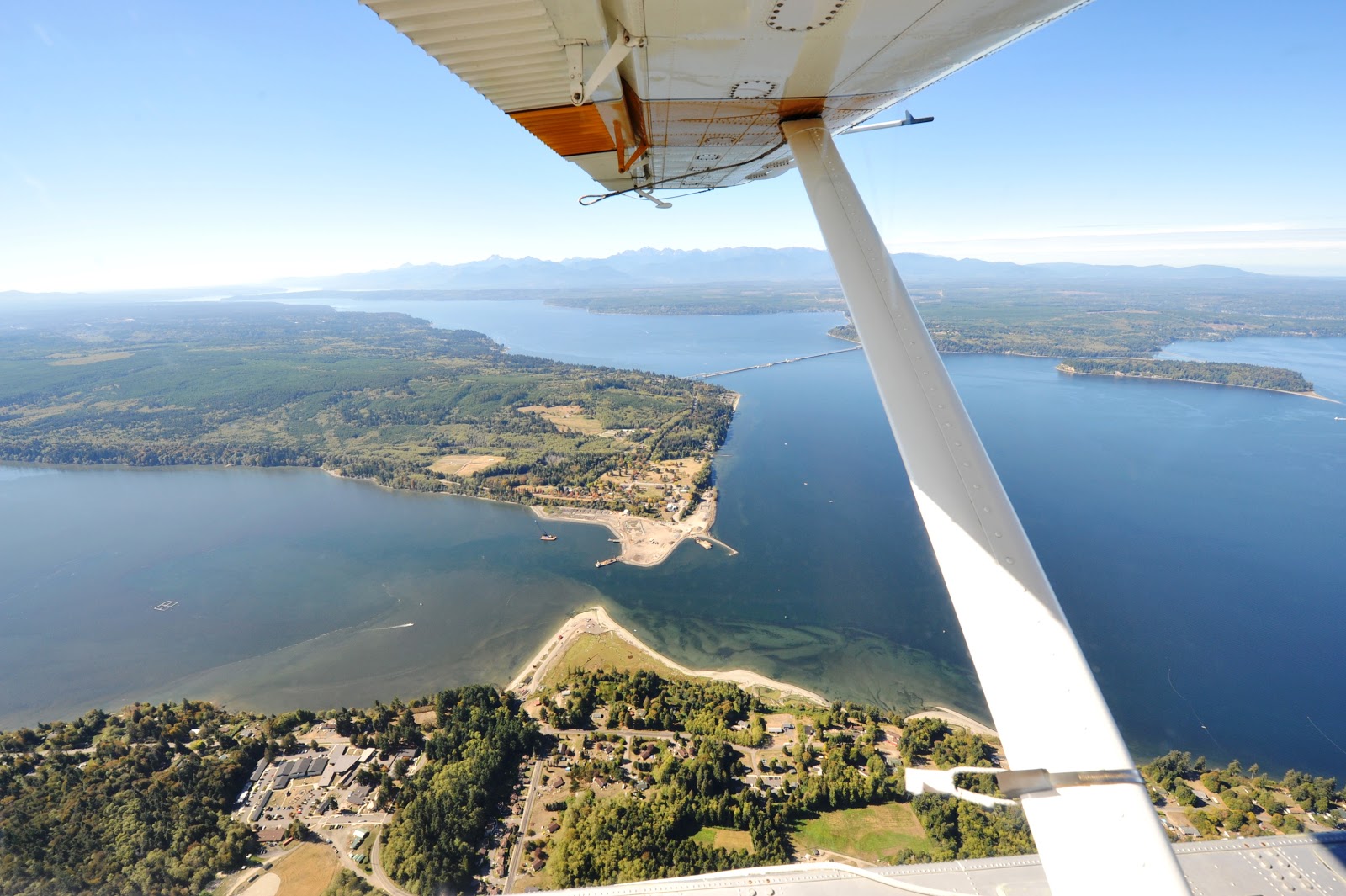
After years of planning, cleanup, and restoration efforts, we are nearing the final stages of our cleanup work at the Port Gamble Mill property. This is no small feat and a great example of how cleanups can bring communities together to further protect and enhance important cultural and environmental resources.
Comment period and open house
We invite the public to review and comment on proposed plans to clean up the uplands portion of the site. The comment period is open April 23 - May 25.
To learn more, attend our online Open House April 30, 6:30 – 7:30 p.m. Please register online.
Background
Historic Port Gamble Mill in the late 1980s.
Port Gamble Bay is also the traditional home of the Port Gamble S’Klallam Tribe who live on the north side of the bay and is culturally important to several other tribes, as well.
For 142 years, starting in 1853, the area included a sawmill operated by Pope and Talbot. After the mill was shut down in 1995 and removed in 1997, the site’s owner, Pope Resources/Olympic Property Group, leased parts of the property for log sorting, wood chipping, marine research, and other light industrial activities.
Historical sampling on the uplands portion of the site identified pollutants from wood product manufacturing and treatment activities, including metals, petroleum hydrocarbons, carcinogenic polycyclic aromatic hydrocarbons (cPAHs), and dioxins/furans.
In-water cleanup
The in-water cleanup, completed in 2017, was one of the largest creosote-treated piling removal projects in Puget Sound. Creosote leaches from treated pilings and structures to surrounding sediment and water, accumulating in fish and shellfish. The cleanup included removal of over 8,500 treated pilings and 110,000 cubic yards of wood waste and contaminated sediment.
Habit preservation and restoration
The Port Gamble cleanup is also a great example of how cleanups can stimulate habitat restoration and preservation efforts. Thanks to $9 million from the Washington Legislature, we purchased land for conservation and recreation, and completed restoration and pollution control projects in the bay.
We worked with Kitsap County, Pope Resources/Olympic Property Group (which owned the property), the land conservancy group Forterra, and the Port Gamble community for over four years to reach the agreement that included contributing partial funding to purchase 535 acres to create Port Gamble Forest Heritage Park and provide full funding to Kitsap County to protect and conserve 1,355 acres of the Port Gamble Forest Block. Restoration efforts included:
- Restoring two acres of eelgrass to support Pacific herring, fish, and crab
- Enhancing nine acres of Olympia oyster habitat
- Replanting 1½ acres of trees and shrubs
- Removing 296 tons or 591,600 pounds of debris from beaches and tidelands
The successes at Port Gamble show how cleanups can galvanize local communities and stimulate restoration and protection, to be enjoyed by generations to come.
To learn more about the in-water cleanup of Gamble Bay and our restoration efforts, read our three-part blog series:


